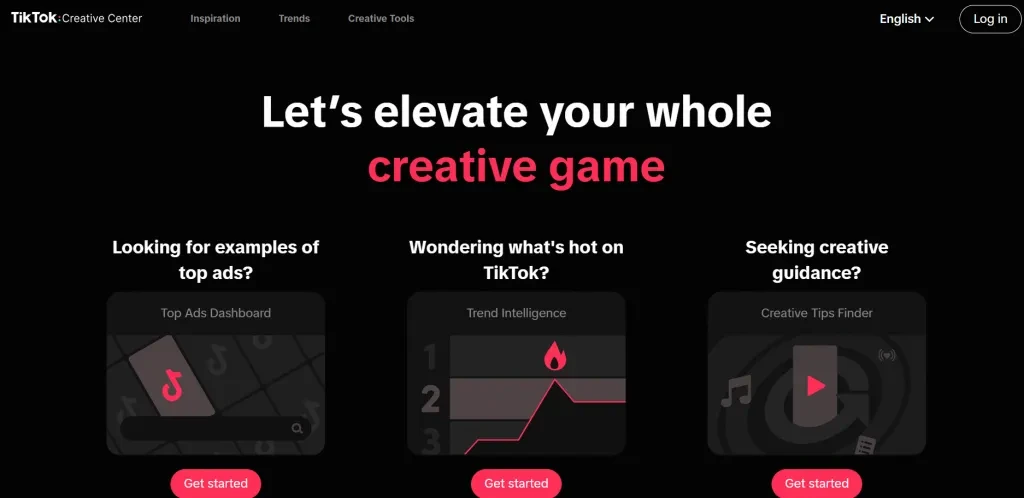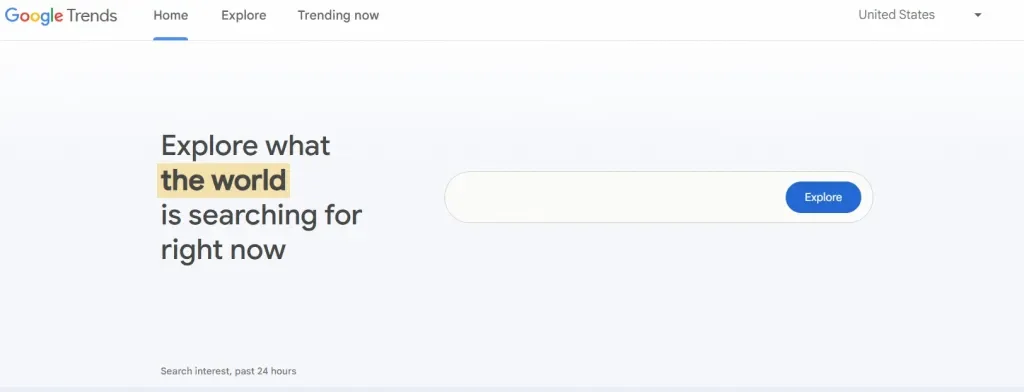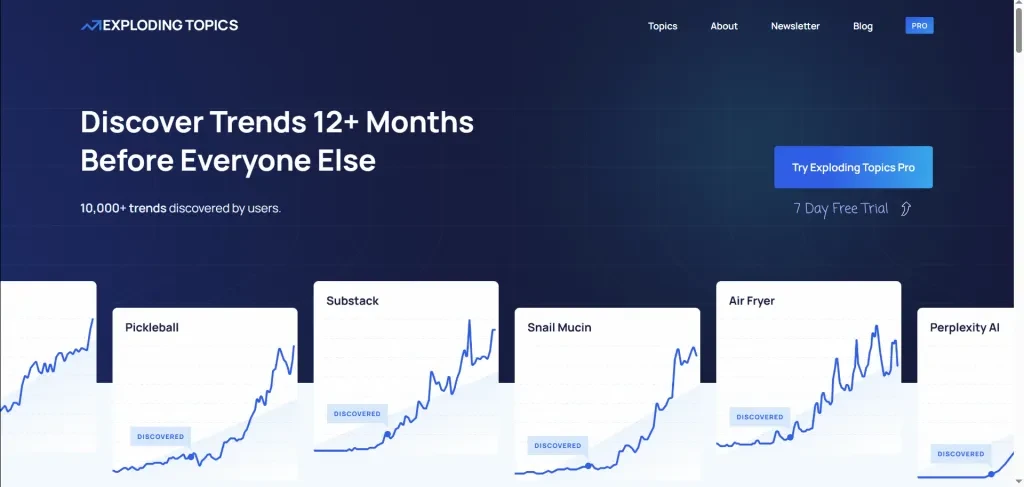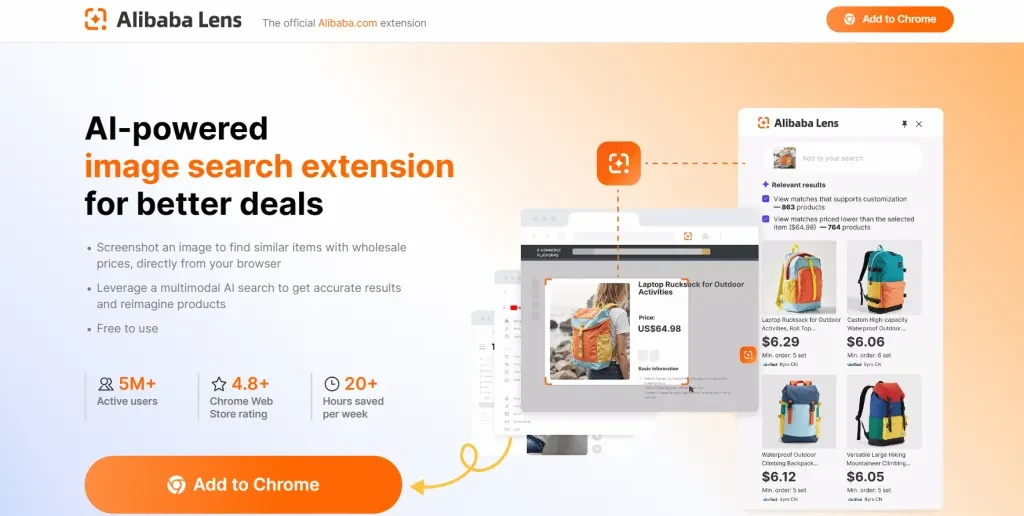Knowing how to find trending products is key for businesses looking to stay ahead. In a fast-moving market, early trend discovery can lead to big wins. This guide walks through proven methods—like tracking social media trends, analyzing keyword data, and checking bestseller lists—plus smart tools like Alibaba Lens, an AI-powered image search plugin that simplifies B2B sourcing from visuals you spot online.
Table of Contents
Types of trending products
How to find trending products
1. Monitor social media platforms
2. Use data-driven product research tools
3. Research online marketplaces
4. Analyze competitors
5. Gather customer feedback and conduct surveys
6. Listen to eCommerce podcasts
Use Alibaba Lens to trace and validate visual trends
Implementation strategies
Conclusion
Types of trending products
Before diving into research methods, it’s important to understand the different types of product trends you might encounter:
Short-term trends emerge quickly, often driven by viral social media content, celebrity endorsements, or current events. These trends typically experience explosive growth followed by a rapid decline. Think fidget spinners or certain TikTok-famous gadgets that capture attention briefly but fade just as quickly.
Mid-long-term trends develop over months or years, usually stemming from deeper shifts in consumer behavior or technological advancements. Products like eco-friendly alternatives, health monitoring devices, or ergonomic work-from-home equipment fall into this category, offering more sustainable business opportunities.
Seasonal trends recur predictably throughout the year, tied to holidays, weather changes, or annual events. While these products may not be “new,” their demand spikes during specific periods, making timing crucial for maximizing sales.
Understanding which type of trend you’re targeting helps set realistic expectations for product lifecycle and determines your approach to inventory, marketing, and scaling.
How to find trending products
1. Monitor social media platforms
Social media has become the primary launchpad for new trends, with platforms serving as real-time indicators of consumer interests and emerging products.
TikTok

TikTok’s rapid growth has made it a trend-setting powerhouse. The platform’s algorithm excels at rapidly spreading new product discoveries, making it invaluable for trend research.
The TikTok Creative Center provides a wealth of trend data, organizing popular products by category, region, and engagement metrics. This free resource allows you to see exactly which products are gaining traction among TikTok’s vast user base. The platform’s unique “For You Page” algorithm creates viral moments for products much faster than traditional social media, often turning obscure items into overnight sensations.
Creators on TikTok frequently showcase products in authentic, real-world scenarios, providing a window into how consumers actually use and interact with items. This authenticity drives higher conversion rates when viewers discover products through the platform.
Pro Tip: Create a “trend-hunting” TikTok account where you exclusively follow creators in your niche. After a week of engagement (liking, commenting, and saving relevant content), your “For You Page” will transform into a curated stream of potential product trends specific to your market.

Despite being more established, Instagram remains influential for product discovery, particularly for lifestyle, fashion, and beauty products.
Instagram’s hashtag research capabilities allow you to uncover trending products by exploring related tags. Start with a basic product category like #kitchengadgets and notice which specific products appear repeatedly with high engagement.
Instagram Stories often reveal early-stage trends, as users share ephemeral content about new discoveries before they commit to permanent posts. These fleeting glimpses can signal emerging trends weeks before they appear in feed posts or gain widespread attention.
Pro Tip: Pay attention to the “saved” count on product posts, not just likes and comments. High save rates often indicate genuine purchase intent, as users are bookmarking products they intend to buy later.
YouTube

YouTube’s extended video format allows for comprehensive product reviews and demonstrations that reveal which features genuinely resonate with consumers. This depth creates more thoughtful evaluation than quick-scrolling platforms.
The platform’s unboxing and review genres generate billions of views annually and serve as strong indicators of consumer excitement. More importantly, the comments sections reveal unfiltered reactions and purchase intent signals that can help validate trend potential.
Pro Tip: Search for phrases like “where can I buy this” or “link to purchase” in YouTube comments to quickly identify products generating purchase intent from viewers.
Reddit and Facebook Groups

These community platforms feature conversation-driven content rather than algorithm-promoted posts, providing unfiltered consumer perspectives. Users actively seek recommendations, share experiences, and discuss products in depth.
The anonymous nature of Reddit often leads to more honest product feedback than platforms where users maintain personal identities. Meanwhile, Facebook Groups offer concentrated collections of enthusiasts in particular niches, making them ideal for specialized product trend research.
Pro Tip: Create a spreadsheet to track frequently mentioned products across multiple communities. When you see the same item generating excitement in different groups, it often signals the early stage of a trend.
2. Use data-driven product research tools
While social media provides qualitative insights, data tools offer quantitative validation of trends.
Google Trends

Google Trends analyzes billions of searches to provide objective data on consumer interest over time. Its normalized view of search interest allows you to compare products regardless of their absolute search volume, helping identify emerging trends even before they reach massive numbers.
The “Trending Now” section on Google Trends gives you immediate access to currently popular search terms, often reflecting breaking trends or sudden shifts in consumer interest. This section can be particularly valuable for identifying seasonal or event-driven product opportunities before they peak.
The tool’s geographical breakdown reveals regional variations in product interest, which can be crucial for inventory planning and marketing targeting. The related queries section shows exactly how consumers are thinking about products, including features they’re seeking and problems they’re trying to solve.
Pro Tip: When evaluating a potential trend, look at both the “Interest Over Time” and “Interest by Region” sections. The ideal scenario shows steadily increasing interest and growing geographical spread—a sign that the trend is gaining momentum rather than peaking.
Product discovery tools

Specialized tools like Exploding Topics and Dropship.io leverage advanced algorithms to surface emerging trends before they become obvious to the general market. These platforms analyze millions of data points to identify products in their early growth phase—the ideal time to enter a market.
These tools often offer filtering capabilities that general trend platforms lack, allowing you to narrow your search based on specific criteria like price point, product category, or growth rate. This targeted approach saves significant research time and helps identify trends relevant to your specific business model.
Pro Tip: Don’t rely solely on the trending products these tools highlight. Instead, use their filtering capabilities to find products with the specific characteristics you need—like certain price points, shipping weights, or target demographics.
3. Research online marketplaces
E-commerce platforms themselves are valuable sources of trend data, often revealing what consumers are actually purchasing rather than just talking about.
B2B platforms
Wholesale marketplaces provide insights into which products retailers and businesses are stocking in anticipation of consumer demand. This often serves as an early indicator of upcoming retail trends, giving you valuable lead time.
For example, Alibaba.com’s “Featured Selections” tab highlights top-ranking products and new arrivals, effectively curating the massive marketplace into manageable trend indicators. The platform’s supplier showcases reveal what manufacturers have identified as having growth potential based on their market intelligence.

Pro Tip: When browsing B2B marketplaces, sort products by “newest first” if applicable rather than popularity. This helps you discover fresh items before they’ve had time to climb the bestseller rankings.
➕ Read more: How to find trending products on Alibaba.com
Amazon research
Amazon’s Movers and Shakers category shows products experiencing the largest gains in sales rank over the last 24 hours. Unlike static bestseller lists, this dynamic ranking captures products in the midst of their growth trajectory—precisely when you want to discover them.
The platform’s recommendation sections (“Frequently Bought Together” and “Customers Who Bought This Item Also Bought”) reveal complementary product opportunities based on actual purchase data, not merely browsing behavior. These connections often expose emerging product ecosystems before they become obvious trends.
Pro Tip: When you find an interesting product in Movers and Shakers, check its sales rank history using tools like Keepa or CamelCamelCamel. The ideal trend shows sustained improvement in rank over weeks, not just a one-day spike that could indicate a temporary promotion.
Other marketplaces
Don’t limit your research to a single platform:
- Shopify’s Trending Products Blog: Regularly updated with data-backed trend insights.
- Etsy Trending Items: Particularly valuable for handmade, unique, or customized product trends.
- eBay Watch Count: Indicates products generating significant interest.
Cross-referencing trends across multiple marketplaces helps validate their legitimacy and reach.
4. Analyze competitors
Your competitors’ marketing activities can provide valuable trend insights without requiring extensive market research of your own. Extended ad campaigns for specific products usually indicate strong performance, as businesses typically stop promoting underperforming items quickly.
The Facebook Ad Library provides unprecedented transparency into competitor advertising strategies. This free tool shows all active ads any business is running on Facebook and Instagram, including which products they’re investing marketing dollars in and how they’re positioning these offerings.
Pro Tip: Pay attention to ad creative variations. When a competitor tests multiple ad angles for the same product, it usually means they’re doubling down on a profitable item and optimizing its performance.
5. Gather customer feedback and conduct surveys
Well-designed surveys can uncover specific product opportunities by focusing on customer pain points rather than direct product requests. Questions like “What tasks do you find most frustrating?” often reveal unmet needs that point toward trending product categories.
Customer reviews—both on your site and competitors’—contain valuable intelligence about product features that resonate or frustrate consumers. Analyzing these patterns can identify gaps in the market where existing products fall short, creating opportunities for improved alternatives.
Pro Tip: Include open-ended questions in your post-purchase emails, such as “What other products would you like to see in our store?” This ongoing feedback loop can reveal trending products your existing customers are finding elsewhere.
6. Listen to eCommerce podcasts
E-commerce podcasts regularly feature interviews with successful entrepreneurs who share insights about their bestselling products and emerging opportunities. These firsthand accounts provide real-world validation of trend potential that pure data analysis might miss.
Industry experts appearing on these shows often discuss broader market shifts and consumer behavior changes that can inform your product strategy. By connecting these macro trends to specific product categories, you can identify opportunities that align with fundamental market movements rather than fleeting fads.
Pro Tip: Create a “trend journal” specifically for podcast insights. When the same product category or concept is mentioned across multiple episodes or shows, it’s often a signal of an emerging trend worth investigating further.
Use Alibaba Lens to trace and validate visual trends

Alibaba Lens, Alibaba’s official AI-powered image search tool, bridges the gap between spotting visual trends and sourcing them effectively. This Chrome extension allows you to take screenshots of any product you see online and instantly find similar items on Alibaba.com, complete with wholesale pricing and supplier information.
The tool works across any website, eliminating the need to download images and manually upload them. This streamlined workflow allows for rapid validation of dozens of potential trending products in minutes rather than hours, turning casual browsing into actionable product research.
Pro Tip: Use Alibaba Lens for reverse-engineering competitors’ best sellers. When you see a product performing well on other stores, screenshot it to find similar items—often at better wholesale prices than your competitor might be paying.
➕ Read more: How to use Alibaba Lens to achieve more B2B success.
Implementation strategies
Once you’ve identified a promising trend, move quickly but strategically:
- Test before scaling: Start with a small inventory or use dropshipping to validate demand.
- Optimize for search: Ensure your product listings include trending keywords to capture organic traffic.
- Leverage the trend in marketing: Highlight the product’s trending status in your promotional materials.
- Monitor performance closely: Set clear KPIs to determine success and be ready to pivot if necessary.
- Plan for post-trend strategy: Consider how you’ll adapt once the initial trend peaks.
Pro Tip: Create “coming soon” product pages with email signup forms before fully committing to inventory. This allows you to gauge interest and build a waiting list while finalizing sourcing details.
Conclusion
Finding trending products in 2025 requires a multi-faceted approach, combining social media monitoring, data analysis, marketplace research, and cutting-edge tools like Alibaba Lens. The most successful sellers don’t rely on a single method but instead develop systematic approaches to continuously identify emerging opportunities.
Remember that timing is critical—the goal is to catch trends on the upswing, before they become oversaturated. By implementing the strategies outlined in this guide and developing a consistent trend research routine, you’ll position yourself to capitalize on the next big thing before your competitors even notice it.
Whether you’re a new entrepreneur or an established brand, the ability to identify and act on product trends will remain a fundamental competitive advantage in the ever-evolving e-commerce landscape of 2025 and beyond.

Looking for an easier way to find products and better deals from any website
while browsing? Add Alibaba Lens to Chrome and start using AI-powered image search for free today.



